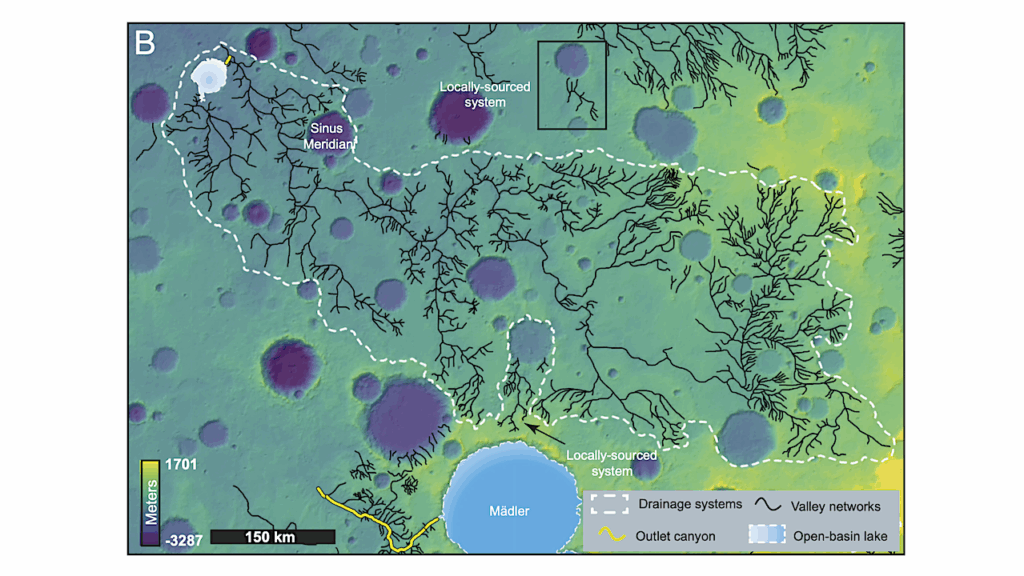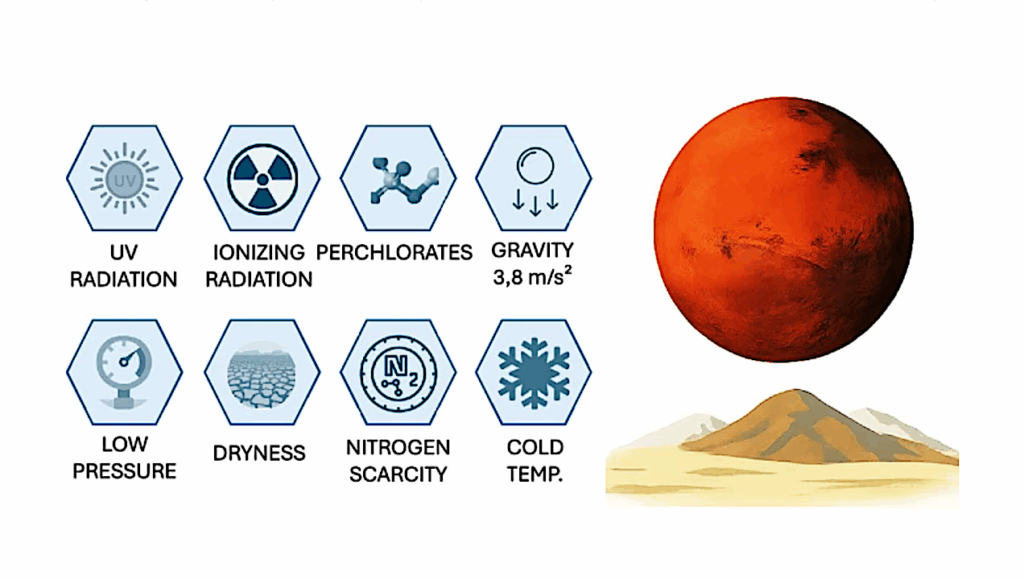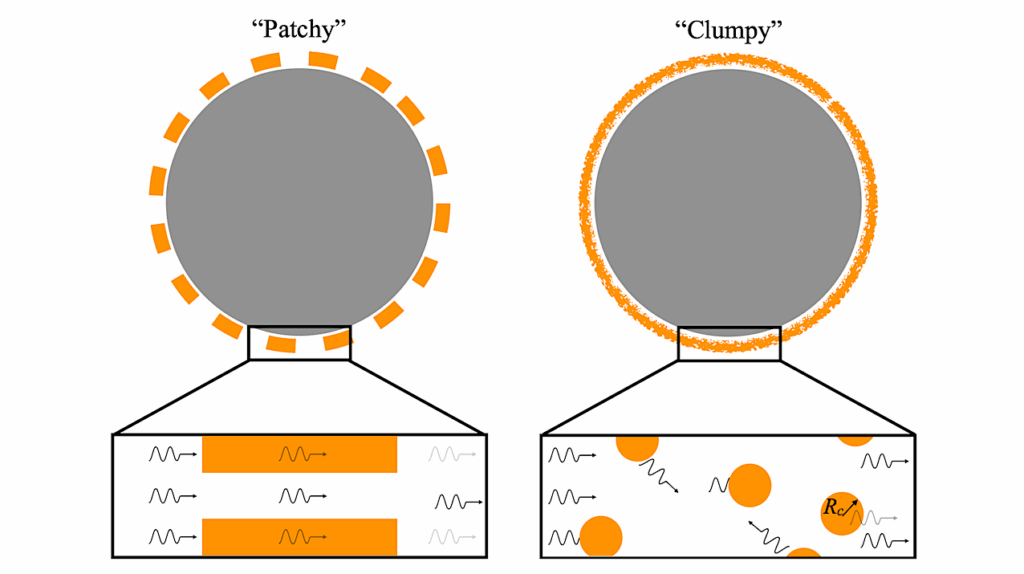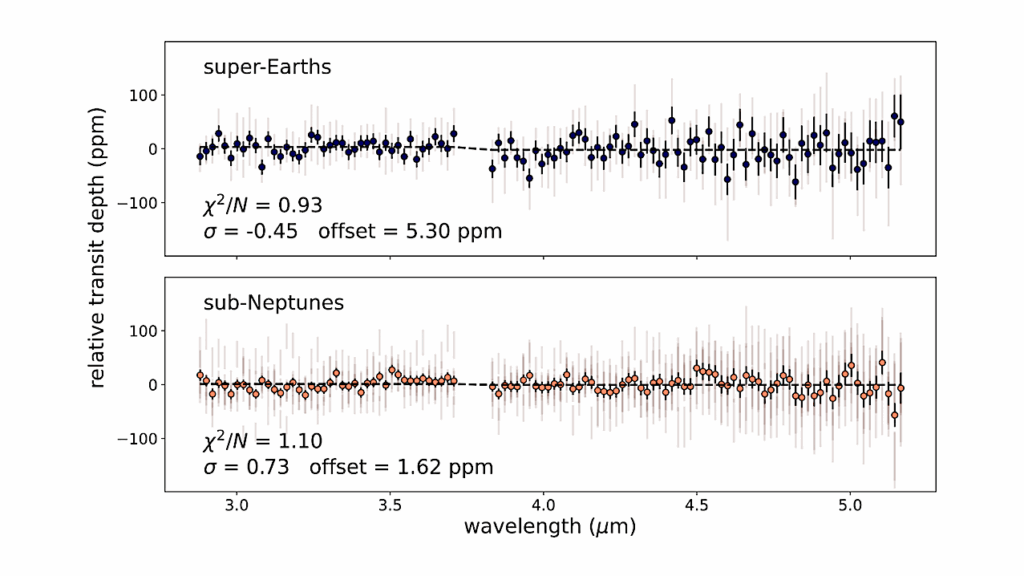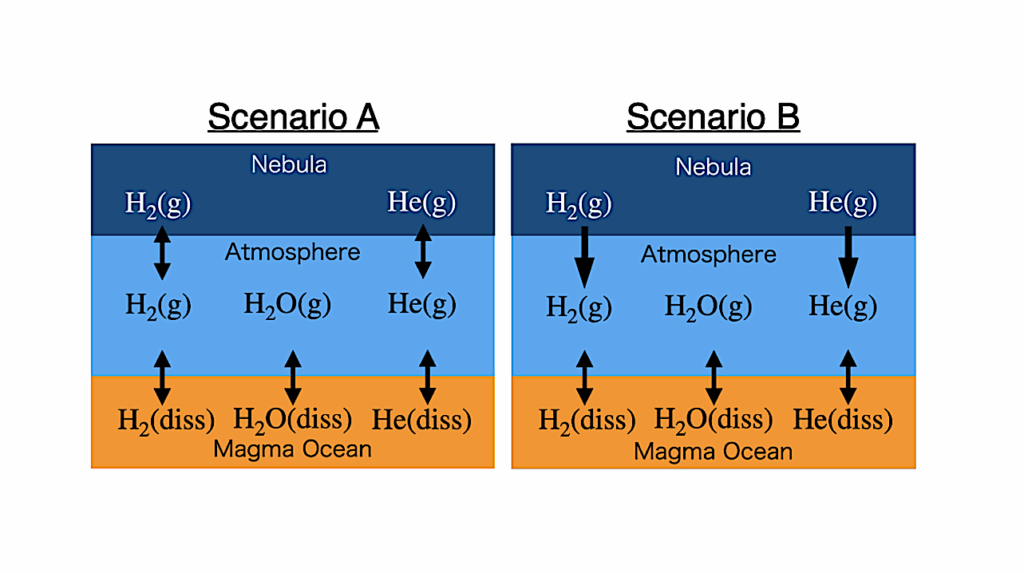The Impact of Icy Cometary ‘Impacts’ on Exoplanetary Atmospheres I: Tidally-Locked Terrestrial Exoplanets
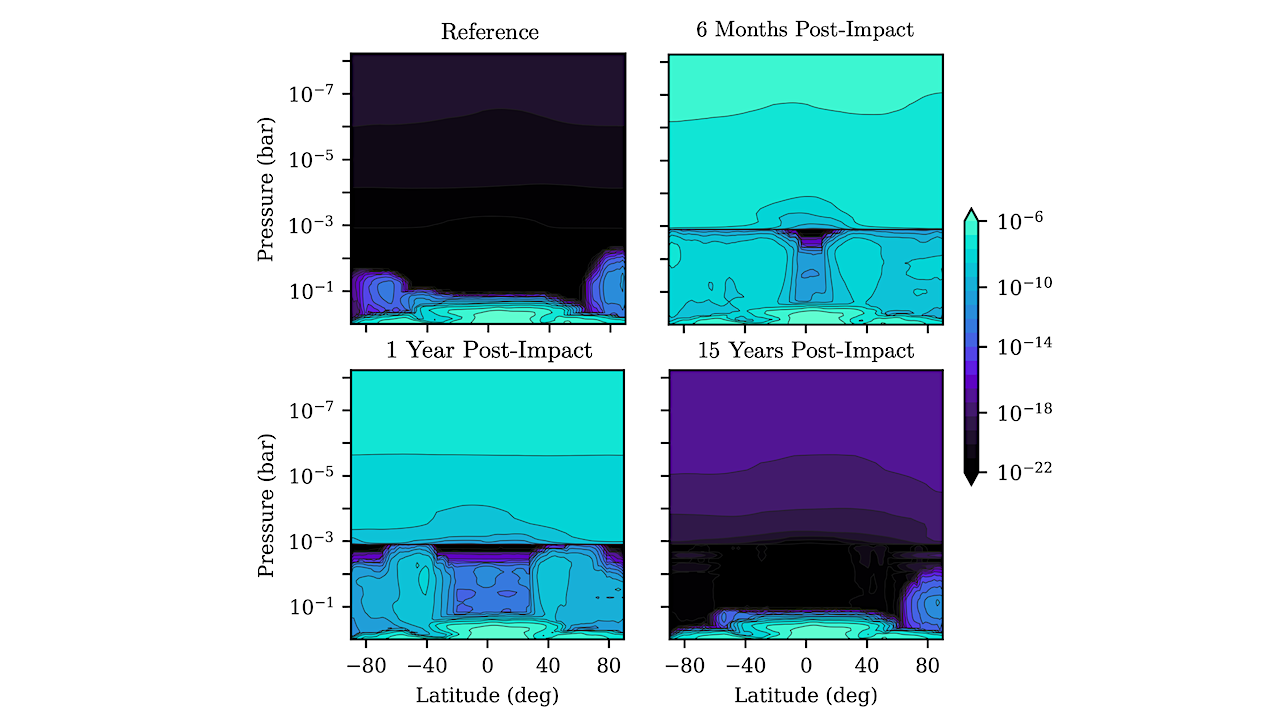
Impacts by rocky and icy bodies are thought to have played a key role in shaping the composition of solar system objects, including the Earth’s habitability. Hence, it is likely that they play a similar role in exoplanetary systems.
We investigate how an icy cometary impact affects the atmospheric chemistry, climate, and composition of an Earth-like, tidally-locked, terrestrial exoplanet, a prime target in the search for a habitable exoplanet beyond our solar system.
We couple a cometary impact model which includes thermal ablation and pressure driven breakup with the 3D Earth System Model WACCM6/CESM2, and use this model to investigate the effects of the water and thermal energy delivery associated with an R=2.5 km pure water ice cometary impact on an Earth-like atmosphere.
We find that water is the primary driver of longer timescale changes to the atmospheric chemistry and composition by acting as a source of opacity, cloud ice, and atmospheric hydrogen/oxygen.
The water opacity drives heating at ∼5×10−4 bar, and cooling below, due to a decreased flux reaching the surface. The increase in atmospheric hydrogen and oxygen also drives an increase in the abundance of hydrogen/oxygen rich molecules, with the exception of ozone, whose column density decreases by ∼10%.
These atmospheric changes are potentially observable for ∼ 1-2 years post-impact, particularly those associated with cloud ice scattering. They also persist, albeit at a much reduced level, to our quasi-steady-state, suggesting that sustained bombardment or multiple large impacts have the potential to shape the composition and habitability of terrestrial exoplanets.

Horizontal slices of the fractional water abundance at a pressure of P = 2 × 10−2 bar (∼ 25 km above the surface), showing the transport of impact delivered water from the sub-stellar point both longitudinally (forming a equatorial band of water) and latitudinally (specifically towards the south-pole). Here we consider our combined water and heat deposition cometary impact model for a pure water ice comet with a radius of 2.5 km and density of 1g cm−3 . Note that this transport is closely associated with the horizontal wind, the mean of which is shown at the top right of each panel and which we plot using orange quivers. And that the dynamic range of each colour bar is different in order to highlight the change in water distribution with time. — astro-ph.EP
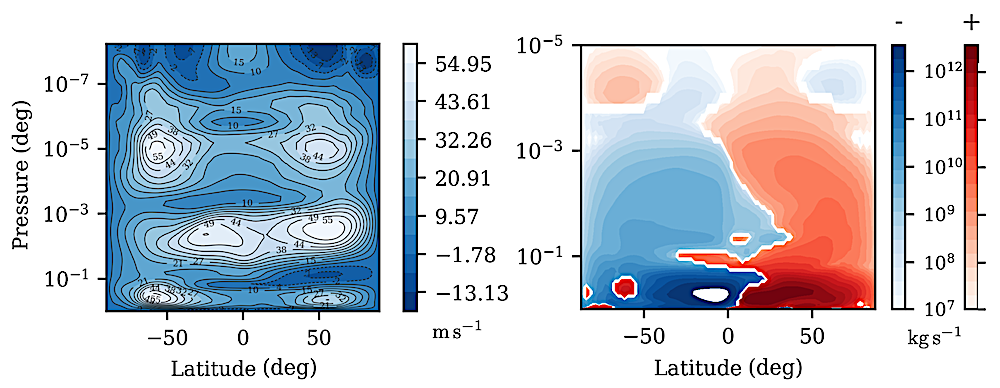
Zonally and temporally averaged zonal-wind (left) and meridional circulation streamfunction (right) for our combined water and heat deposition cometary impact model. Note that the meridional circulation profile is plotted on a log scale with clockwise circulations shown in red and anti-clockwise circulations shown in blue. Thus, for example, we find that the clockwise cell in the northern hemisphere and the anti-clockwise cell in the southern hemisphere combine to drive an upflow slightly north of the equator at all pressures greater than 10−5 bar. For P < 10−5 bar, which we don’t show due to the relative weakness of outer atmosphere circulations, we find a series of stacked circulation cells which alternate between clockwise and anti-clockwise circulation with altitude. — astro-ph.EP
Felix Sainsbury-Martinez, Catherine Walsh, Greg Cooke
Comments: Submitted to ApJ
Subjects: Earth and Planetary Astrophysics (astro-ph.EP)
Cite as: arXiv:2409.11151 [astro-ph.EP] (or arXiv:2409.11151v1 [astro-ph.EP] for this version)
https://doi.org/10.48550/arXiv.2409.11151
Focus to learn more
Submission history
From: Felix Sainsbury-Martinez
[v1] Tue, 17 Sep 2024 13:03:42 UTC (8,275 KB)
https://arxiv.org/abs/2409.11151
Astrobiology,



